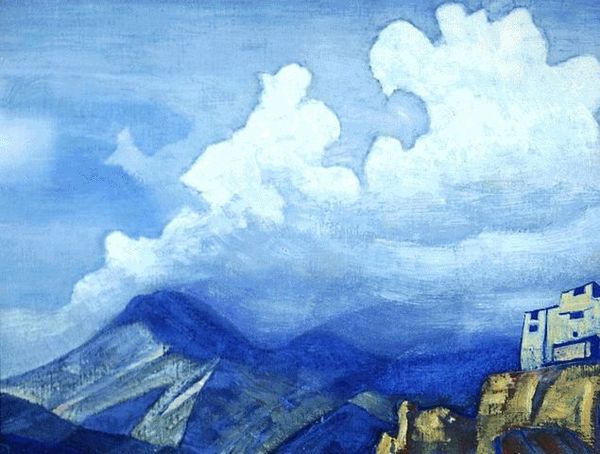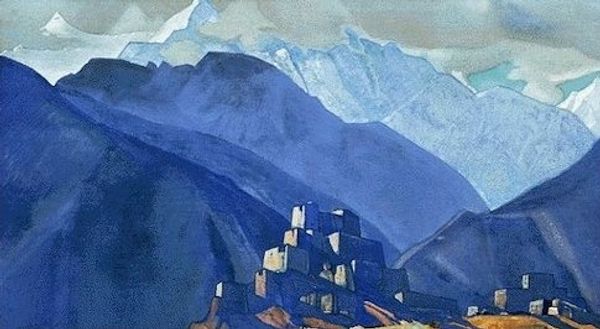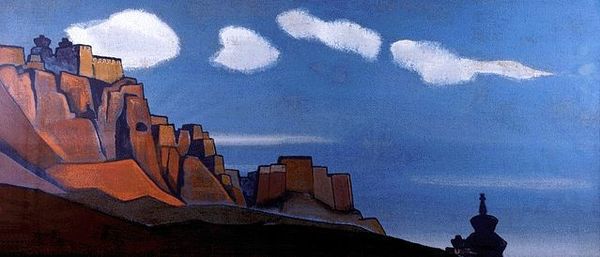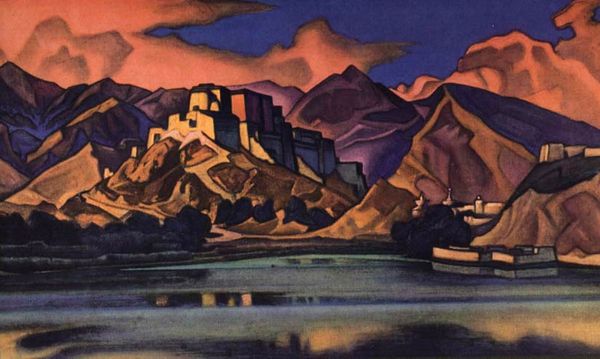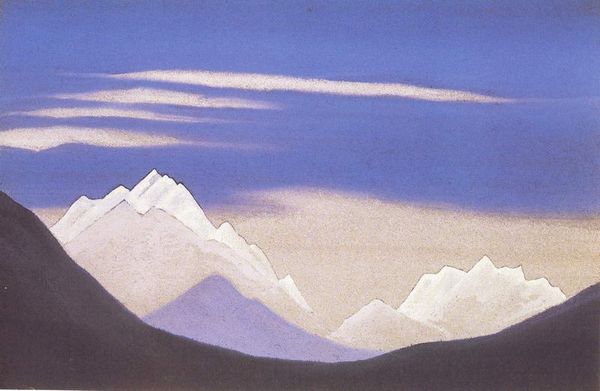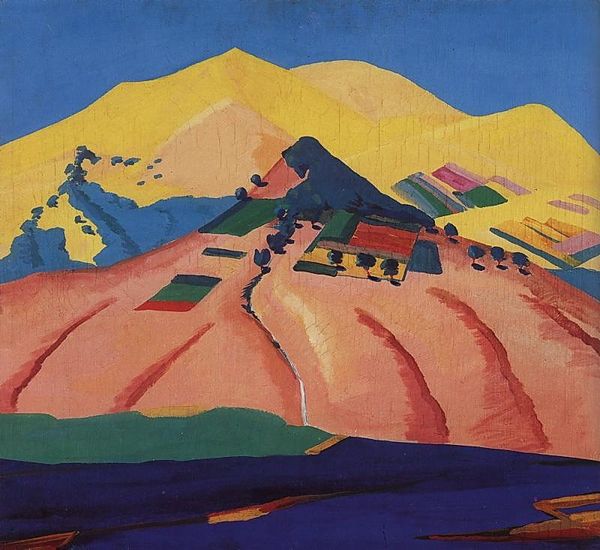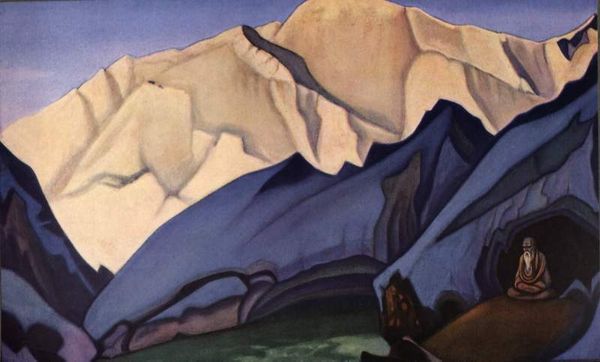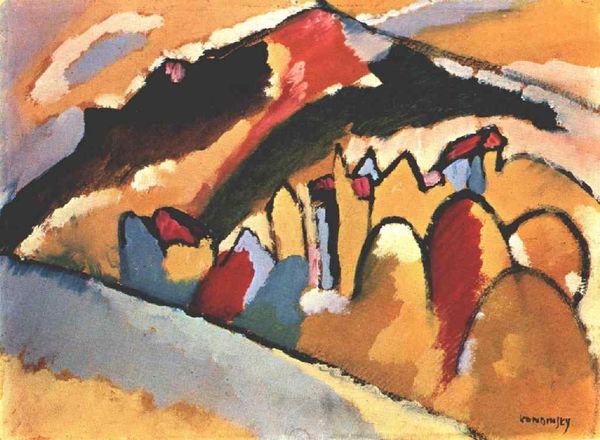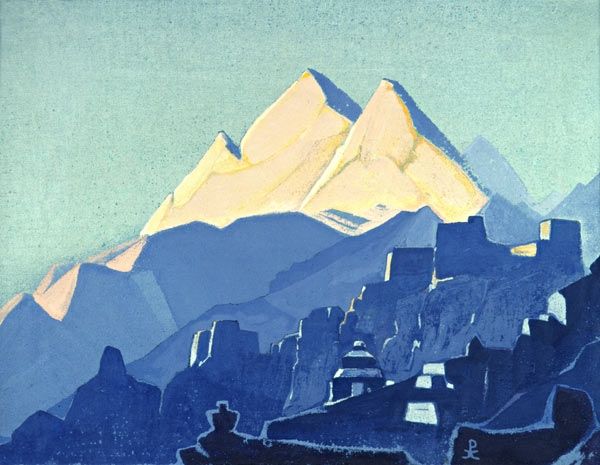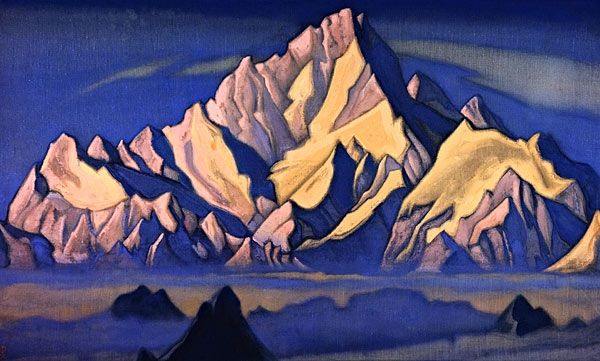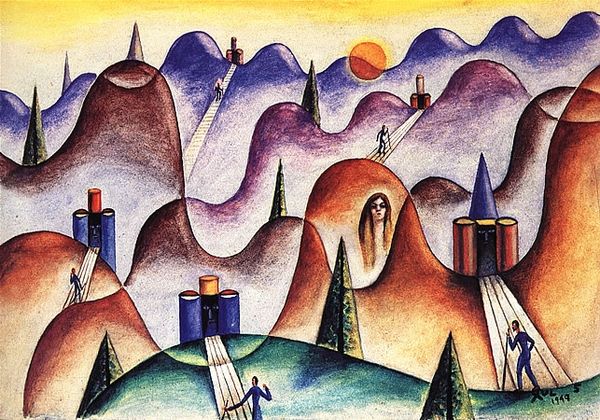
Dimensions: 47 x 79.2 cm
Copyright: Public domain
Nicholas Roerich made this painting, Tibet. Monastery in the mountains, with paint on canvas, we don't know exactly when. What strikes me most is how the geometric forms create a sense of monumentality, but also, maybe paradoxically, how that monumentality is built up out of tentative strokes. Look closely, and you can see the thin washes of color Roerich applied, one layer at a time, almost like he was building up the image in his mind as he worked. The paint isn't thick or showy, it's quiet and considered. Notice the ochre and brown tones of the monastery buildings against the stark white and blue of the mountains. There's a real sense of place evoked with such sparse means. This painting reminds me of some of the early landscapes by Lawren Harris, another artist who was deeply interested in the spiritual dimensions of landscape. Both artists encourage us to slow down and contemplate the world around us.
Comments
No comments
Be the first to comment and join the conversation on the ultimate creative platform.
